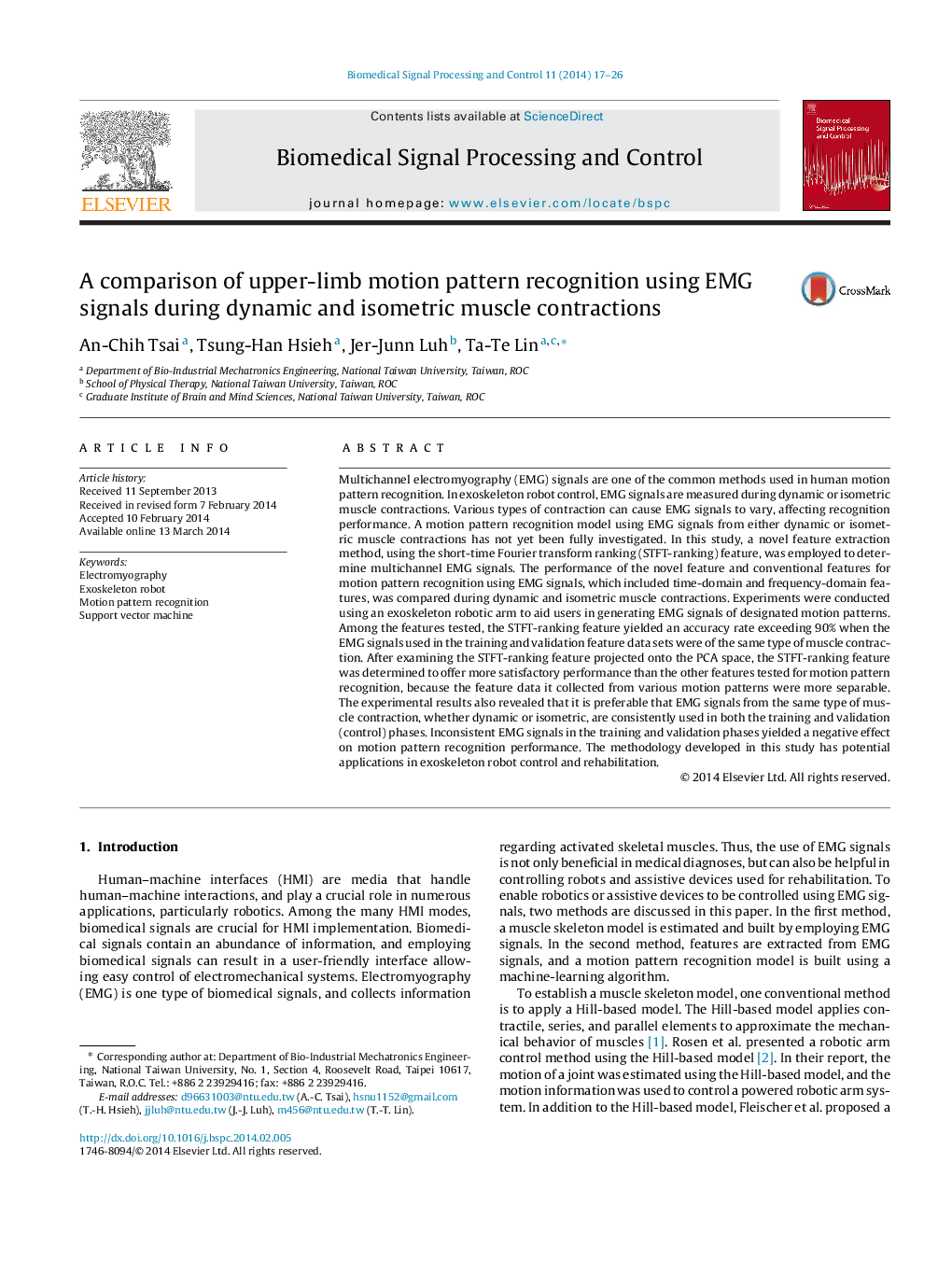| Article ID | Journal | Published Year | Pages | File Type |
|---|---|---|---|---|
| 558122 | Biomedical Signal Processing and Control | 2014 | 10 Pages |
•STFT-ranking feature was employed for multi-channel EMG signal analysis.•Motion pattern recognition using dynamic or isometric EMG signals was compared.•Recognition accuracy over 90% was achieved applying the STFT-ranking feature.•Inconsistent EMG signals in training and validation phases yield a negative effect.
Multichannel electromyography (EMG) signals are one of the common methods used in human motion pattern recognition. In exoskeleton robot control, EMG signals are measured during dynamic or isometric muscle contractions. Various types of contraction can cause EMG signals to vary, affecting recognition performance. A motion pattern recognition model using EMG signals from either dynamic or isometric muscle contractions has not yet been fully investigated. In this study, a novel feature extraction method, using the short-time Fourier transform ranking (STFT-ranking) feature, was employed to determine multichannel EMG signals. The performance of the novel feature and conventional features for motion pattern recognition using EMG signals, which included time-domain and frequency-domain features, was compared during dynamic and isometric muscle contractions. Experiments were conducted using an exoskeleton robotic arm to aid users in generating EMG signals of designated motion patterns. Among the features tested, the STFT-ranking feature yielded an accuracy rate exceeding 90% when the EMG signals used in the training and validation feature data sets were of the same type of muscle contraction. After examining the STFT-ranking feature projected onto the PCA space, the STFT-ranking feature was determined to offer more satisfactory performance than the other features tested for motion pattern recognition, because the feature data it collected from various motion patterns were more separable. The experimental results also revealed that it is preferable that EMG signals from the same type of muscle contraction, whether dynamic or isometric, are consistently used in both the training and validation (control) phases. Inconsistent EMG signals in the training and validation phases yielded a negative effect on motion pattern recognition performance. The methodology developed in this study has potential applications in exoskeleton robot control and rehabilitation.
Graphical abstractFigure optionsDownload full-size imageDownload as PowerPoint slide
